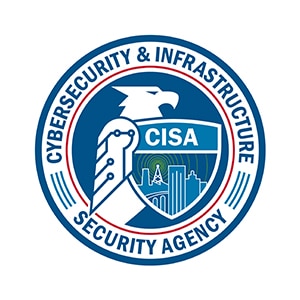Low voltage cabling projects are integral to modern infrastructure, providing essential support for data, communication, and security systems across various facilities. These projects involve installing cabling systems operating at 50 volts or less, commonly used in telecommunications, network data, video surveillance, and audio-visual systems. Although these projects may appear straightforward, they present unique risks that can impact both the immediate success and long-term reliability of the infrastructure. In this blog, we explore the key risks associated with low voltage cabling projects and offer insights into effective risk mitigation.
Low Voltage Cabling Projects come with distinct risks, including poor planning and design, inadequate installation practices, non-compliance with codes and regulations, signal interference and network performance issues, and future-proofing and scalability concerns.
Key Takeaway:
- Thorough planning and design are essential to avoid infrastructure issues that compromise the performance and reliability of low voltage cabling systems.
- Proper installation by qualified technicians using high-quality materials is crucial to prevent signal interference, network outages, and costly maintenance.
- Adhering to all relevant codes and regulations ensures safety, avoids legal complications, and supports the long-term functionality of low voltage cabling projects.
- Using shielded cables, maintaining proper separation, and implementing correct grounding practices are key to minimizing signal interference and optimizing network performance.
- Planning for future needs and ensuring scalability in the design phase are vital to avoiding obsolescence and ensuring the longevity of low voltage cabling systems.
These risks can significantly impact the reliability and performance of your infrastructure. Understanding and addressing these challenges is essential for successful project outcomes. Keep reading to learn how to mitigate these risks effectively and ensure the long-term success of your low voltage cabling projects.
Poor Planning and Design
Inadequate planning and design can lead to significant issues in low voltage cabling projects. This can manifest as insufficient infrastructure to support both current and future technological needs, improper cable routing, or inadequate power supply—all of which compromise the performance and reliability of the systems dependent on the cabling.
Mitigating this risk requires a thorough and comprehensive approach to planning and design. Here’s how you can do it:
- Conduct a Needs Assessment: Begin with a detailed needs assessment to understand the facility’s current and future technology requirements. Consider data bandwidth, power needs, and potential expansions.
- Develop a Detailed Design Plan: Create a meticulous design plan that includes cable types, routes, termination points, and necessary power supplies or backup systems. Ensure the design complies with industry standards, such as ANSI/TIA and BICSI.
- Engage Experienced Professionals: Collaborate with seasoned low voltage cabling designers and engineers who are adept at anticipating and addressing potential challenges.
Inadequate Installation Practices
Substandard installation practices pose a common risk in low voltage cabling projects. Improper installation can result in signal interference, network outages, and increased maintenance costs. These issues often stem from the use of unskilled labor, poor-quality materials, or failure to adhere to industry standards and best practices.
Addressing the risk of inadequate installation involves key steps:
- Hire Qualified Technicians: Ensure that the installation is carried out by certified professionals in low voltage cabling, such as those with BICSI RCDD or CNCI certifications.
- Follow Industry Standards: Adhere strictly to industry standards and best practices, including those outlined by ANSI/TIA, NEC, and BICSI, to ensure proper cable handling, routing, and termination.
- Use Quality Materials: Invest in high-quality cables, connectors, and components that meet or exceed industry standards, avoiding the pitfalls of low-quality materials that can degrade and cause failures over time.
Non-Compliance with Codes and Regulations
Failure to comply with local, state, or federal codes and regulations can lead to serious repercussions, including fines, project delays, and legal actions. Compliance with various electrical codes, safety regulations, and building standards is essential to ensuring both safety and functionality in low voltage cabling projects.
To minimize the risk of non-compliance:
- Stay Informed: Keep up-to-date with the latest codes and regulations relevant to low voltage cabling projects, such as the NEC, OSHA guidelines, and local building codes.
- Work with Licensed Professionals: Partner with licensed professionals who are well-versed in applicable codes and regulations, ensuring all aspects of the project comply with the necessary standards.
- Conduct Regular Inspections: Implement regular inspections and audits throughout the project lifecycle to proactively identify and address potential compliance issues.
Signal Interference and Network Performance Issues
Signal interference is a significant concern in low voltage cabling projects, particularly in environments with high levels of electromagnetic interference (EMI) or radio frequency interference (RFI). Issues such as poor cable shielding, improper grounding, or proximity to electrical equipment can lead to signal degradation, data loss, and reduced network performance.
Mitigating signal interference and ensuring optimal network performance involves:
- Use Shielded Cables: In environments with high EMI or RFI, opt for shielded cables (STP or S/FTP) to protect against interference and prevent signal degradation.
- Maintain Proper Separation: Ensure proper separation between low voltage cabling and electrical power lines or equipment that can cause interference, following guidelines on minimum separation distances.
- Implement Proper Grounding: Guarantee that all cabling and equipment are properly grounded, as poor grounding can lead to signal interference and safety risks.
Future-Proofing and Scalability Concerns
A critical risk in low voltage cabling projects is failing to future-proof the infrastructure. With the rapid pace of technological advancement, a cabling system that meets today’s needs may become obsolete within a few years, leading to costly upgrades, rework, and disruptions to facility operations.
To address the risk of obsolescence and ensure scalability:
- Plan for the Future: Design cabling infrastructure with future needs in mind, considering higher-grade cables, such as Cat 6A or fiber optic, to support increased bandwidth and data transmission speeds.
- Allow for Expansion: Design pathways and spaces to accommodate future expansion or upgrades, using modular patch panels and racks that can house additional equipment as needed.
- Stay Ahead of Technological Trends: Keep abreast of emerging technologies and standards in low voltage cabling to anticipate future needs and make informed decisions during planning and design stages.
Safeguarding Your Low Voltage Cabling Projects for Long-Term Success
Low voltage cabling projects are essential to the operation of modern facilities, yet they come with distinct risks that require careful management. By understanding these risks and implementing proactive strategies to mitigate them, facility managers and project owners can ensure a reliable, high-performing cabling infrastructure that meets both current and future demands.
At Miami Federal, we specialize in designing and installing low voltage cabling systems that minimize risk and maximize performance. Contact us today to speak with our experts and discover how we can provide a customized solution that meets your needs and mitigates potential risks.
What are the environmental considerations in low voltage cabling projects?
Environmental considerations in low voltage cabling projects include minimizing the impact on the surrounding environment and ensuring the sustainability of materials used. This involves selecting eco-friendly, recyclable cabling materials and reducing waste during installation. Considerations also extend to how the cabling project interacts with the building’s energy efficiency, such as choosing energy-efficient components and implementing cable management systems that optimize airflow and reduce energy consumption. Additionally, proper disposal of old cabling and adherence to environmental regulations help minimize the project’s environmental footprint.
How does the choice of cable management system impact the performance of low voltage cabling?
The choice of cable management system significantly impacts the performance and longevity of low voltage cabling. Proper cable management helps maintain organized pathways, reducing the risk of cable damage, signal interference, and overheating. It also facilitates easier maintenance and upgrades, allowing technicians to access and manage cables without disrupting the entire system. A well-designed cable management system supports optimal airflow, prevents tangling, and reduces the stress on cables, ensuring consistent performance and extending the life of the infrastructure.
What are the security considerations when implementing low voltage cabling in sensitive environments?
In sensitive environments, such as government facilities or data centers, security considerations for low voltage cabling are paramount. This includes ensuring that cables are protected against physical tampering and unauthorized access. Using secure enclosures, conduits, and lockable access points can help protect the cabling infrastructure. Additionally, implementing secure, shielded cabling that resists electromagnetic interference (EMI) and eavesdropping is critical. Regular security audits and monitoring can further ensure that the cabling system remains secure against potential threats.


















